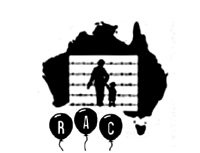Doctors for refugees media release:
Doctors for Refugees calls for an immediate inquiry into the death of Hamid Kehazaei , following the publication of parts of his medical record this week.
“From the records we have seen, it’s clear that the incorrect antibiotics were used right from the start,” says Dr Barri Phatarfod .
“Moreover, the antibiotic chloramphenicol, that could very likely have saved Mr Kehazaei is the first line antibiotic that should be used in this situation, according to the PNG guidelines. It is also extremely cheap – much more so that the ceftriaxone that was used which was in effective. We need to ask why this was not used, or not available at the detention centre clinic when it is freely available elsewhere in PNG.”
The bacteria that was responsible for Mr Kehazaei’s infection, while associated with a high mortality rate, is not intrinsically lethal if treated appropriately and promptly. The historical high mortality is a function of its prevalence in tropical and subtropical environments which are often severely under resourced or hard to access. Similar bacteria are found after floods and exposure to stagnant water, which is the endemic environment in Manus Island.
“In these instances we see ‘Gram Negative’ bacteria which would simply not respond to the penicillin and cephalexin given, no matter how promptly they were administered. By the time he was given the Ceftriaxone, which does have some minor Gram Negative coverage, he appears to have already been in significant sepsis. He was febrile, with clear infection spreading into his body and ‘moaning in pain’. At this point he needed immediate medical evacuation to Australia and radiological imaging to determine the loci of infection in his body. Instead he was kept in PNG for another 3 days.”
Doctors for Refugees also notes Mr Kehazaei first presented to the clinic on 21 August 2014, but the available records start on 25 August 2014 when the request was first made to transfer him. “There is also no record of his condition or treatment on the flight from Manus Island to Port Moresby,” says Dr Phatarfod.
” We can see that when he was transferred, he was significantly hypoxic, and his blood pressure and pulse were only maintained by IV fluids. This would be made much worse by the cabin pressure during the flight. There is no record of him arriving in Port Moresby already intubated, which we would expect in his apparent medical condition.”
Doctors for Refugees Contacts:
Dr Richard Kidd – 0411191433
Dr Barri Phatarfod – 0412090304
Email – doctors4refugees@gmail.com
